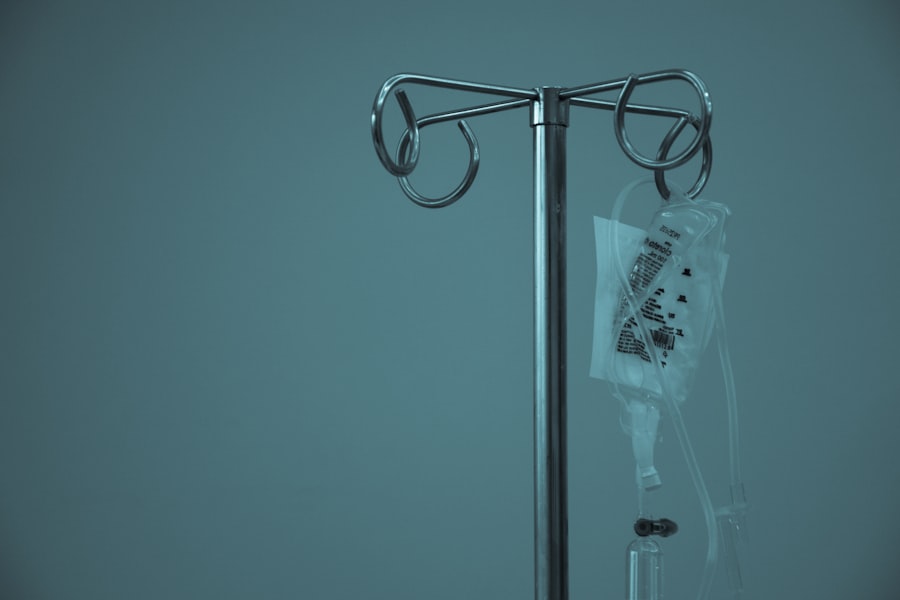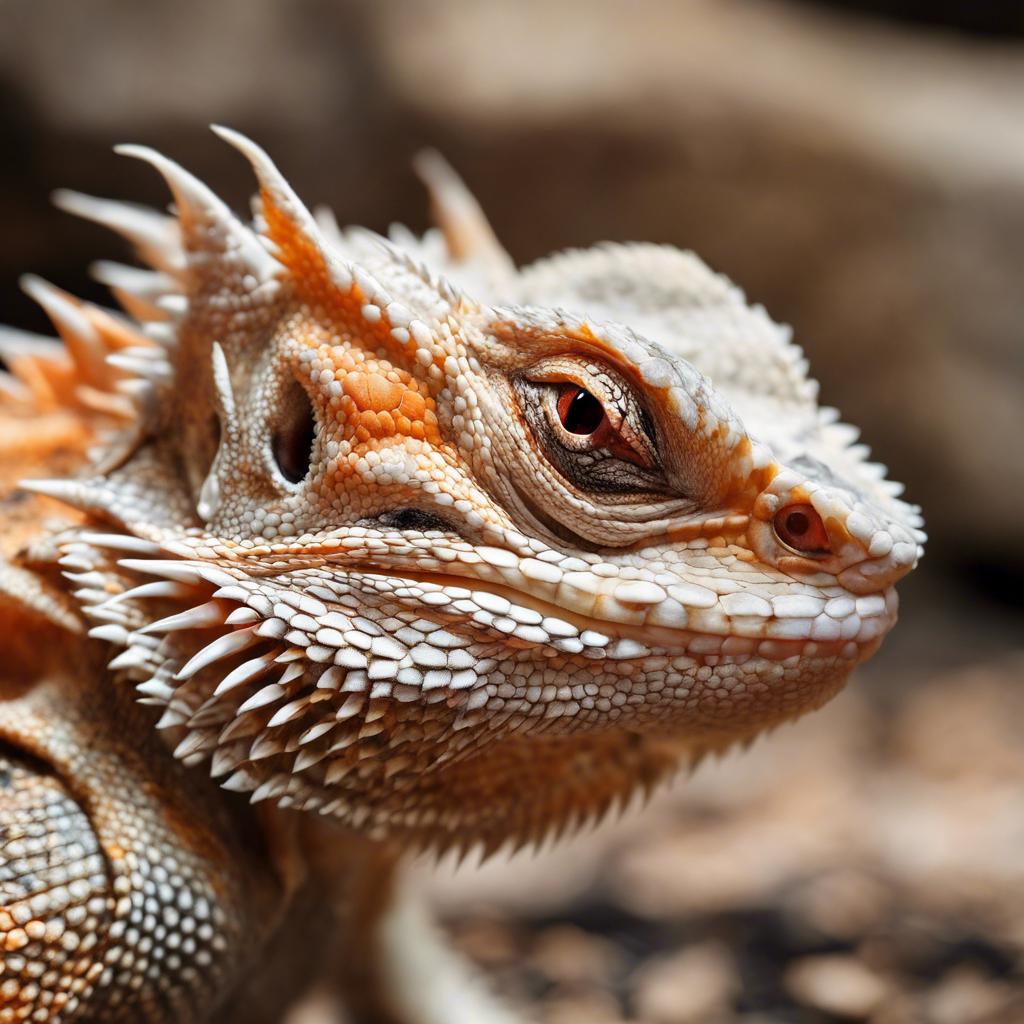Internal bleeding in bearded dragons is a serious condition that can have detrimental effects on their health and well-being. As responsible pet owners, it is important to understand the causes, symptoms, and treatment options for this condition in order to provide the best care for our reptilian companions. This article aims to provide a comprehensive overview of internal bleeding in bearded dragons, including its definition, common causes, signs and symptoms, diagnostic tests, treatment options, care tips, prevention strategies, and when to seek veterinary care.
Key Takeaways
- Internal bleeding is a serious condition that can affect bearded dragons.
- Common causes of internal bleeding in bearded dragons include trauma, infections, and organ damage.
- Signs and symptoms of internal bleeding in bearded dragons include lethargy, loss of appetite, and pale gums.
- Diagnostic tests for internal bleeding in bearded dragons may include blood tests, X-rays, and ultrasounds.
- Treatment options for bearded dragons with internal bleeding may include surgery, medication, and supportive care.
Understanding Internal Bleeding in Bearded Dragons
Internal bleeding refers to the escape of blood from blood vessels into surrounding tissues or body cavities. In bearded dragons, internal bleeding can occur as a result of trauma, infections, or organ damage. The severity of internal bleeding can vary depending on the location and extent of the bleeding. It is important to note that internal bleeding can be life-threatening if not promptly diagnosed and treated.
There are different types of internal bleeding that can occur in bearded dragons. Hemorrhage refers to excessive bleeding from blood vessels, while hematoma refers to a localized collection of blood outside of blood vessels. Hemoperitoneum is the accumulation of blood in the abdominal cavity, while hemothorax is the accumulation of blood in the chest cavity. These different types of internal bleeding can have varying symptoms and require different treatment approaches.
Common Causes of Internal Bleeding in Bearded Dragons
Trauma is one of the most common causes of internal bleeding in bearded dragons. This can occur as a result of falls, rough handling, or fights with other animals. Injuries to the abdomen or chest can lead to internal bleeding in these areas. Infections can also cause internal bleeding in bearded dragons. Bacterial or viral infections can weaken blood vessels and lead to hemorrhage or hematoma formation.
Organ damage is another common cause of internal bleeding in bearded dragons. This can occur due to diseases or conditions that affect the liver, kidneys, or other organs. Tumors or cysts can also cause internal bleeding if they rupture or damage blood vessels. It is important to be aware of these common causes in order to take preventive measures and seek veterinary care if necessary.
Signs and Symptoms of Internal Bleeding in Bearded Dragons
Recognizing the signs and symptoms of internal bleeding in bearded dragons is crucial for early detection and treatment. Common signs include lethargy, loss of appetite, and abnormal behavior. Bearded dragons may appear weak or unresponsive, and they may have difficulty moving or breathing. Other symptoms can include pale gums, rapid breathing, and distended abdomen.
The severity and location of the bleeding can affect the specific symptoms that a bearded dragon may exhibit. For example, if there is bleeding in the chest cavity, a bearded dragon may have difficulty breathing and show signs of respiratory distress. If there is bleeding in the abdominal cavity, a bearded dragon may have a distended abdomen and show signs of discomfort or pain.
Diagnostic Tests for Internal Bleeding in Bearded Dragons
When a bearded dragon is suspected to have internal bleeding, veterinarians will perform various diagnostic tests to confirm the diagnosis and determine the cause and severity of the bleeding. X-rays can help identify fractures or abnormalities in the bones and organs. Ultrasounds can provide detailed images of the internal organs and detect any abnormalities or fluid accumulation. Blood tests can help assess the overall health of the bearded dragon and identify any underlying infections or diseases.
In some cases, veterinarians may need to perform exploratory surgery to directly visualize the internal organs and identify the source of bleeding. This can be particularly helpful if other diagnostic tests are inconclusive or if immediate intervention is required. The choice of diagnostic tests will depend on the specific situation and the veterinarian's expertise.
Treatment Options for Bearded Dragons with Internal Bleeding

The treatment options for bearded dragons with internal bleeding will depend on the cause and severity of the bleeding. In cases of trauma or organ damage, surgery may be necessary to repair any injuries and stop the bleeding. Medications such as antibiotics or antivirals may be prescribed to treat any underlying infections. Supportive care, such as fluid therapy and pain management, may also be provided to stabilize the bearded dragon and promote healing.
It is important to follow the veterinarian's instructions and administer any prescribed medications as directed. Bearded dragons may require a period of rest and recovery after treatment, so it is essential to provide a comfortable and stress-free environment during this time. Regular follow-up appointments with the veterinarian may be necessary to monitor the bearded dragon's progress and make any necessary adjustments to the treatment plan.
Care Tips for Bearded Dragons with Internal Bleeding
Caring for a bearded dragon with internal bleeding requires special attention and care. It is important to provide a comfortable and stress-free environment for the bearded dragon to aid in their recovery. This includes maintaining appropriate temperature and humidity levels in their enclosure, providing a clean and spacious habitat, and minimizing any potential sources of stress or injury.
Monitoring the bearded dragon's behavior and appetite is crucial during the recovery process. Any changes in behavior or appetite should be reported to the veterinarian immediately, as they may indicate complications or a need for further intervention. Administering any prescribed medications as directed is also essential for the bearded dragon's recovery.
Preventing Internal Bleeding in Bearded Dragons
Preventing internal bleeding in bearded dragons involves taking proactive measures to ensure their safety and well-being. Providing a safe and secure enclosure is essential to prevent falls or injuries. Avoiding rough handling or interactions with other animals can also reduce the risk of trauma-related internal bleeding. Regular veterinary check-ups can help identify any underlying health issues that may predispose a bearded dragon to internal bleeding.
Keeping the bearded dragon's environment clean and free of hazards is another important preventive measure. Regularly cleaning the enclosure and removing any sharp objects or potential sources of injury can help minimize the risk of internal bleeding. Providing a balanced diet and ensuring proper hydration can also contribute to the overall health and well-being of the bearded dragon, reducing the likelihood of internal bleeding.
When to Seek Veterinary Care for Bearded Dragons with Internal Bleeding
It is important to seek veterinary care for a bearded dragon with internal bleeding as soon as possible. If the bearded dragon is showing severe symptoms such as difficulty breathing, pale gums, or a distended abdomen, immediate veterinary attention is necessary. If the bleeding is caused by a serious underlying condition such as organ damage or infection, prompt intervention is crucial to prevent further complications.
Even if the symptoms are mild or if the bleeding appears to have stopped, it is still important to consult with a veterinarian. Internal bleeding can have long-term effects on a bearded dragon's health and well-being, so it is best to have them thoroughly evaluated by a professional. The veterinarian will be able to provide an accurate diagnosis and recommend appropriate treatment options based on the specific situation.
Keeping Your Bearded Dragon Healthy and Happy
In conclusion, understanding and preventing internal bleeding in bearded dragons is essential for their overall health and well-being. By being aware of the causes, symptoms, diagnostic tests, treatment options, care tips, and prevention strategies discussed in this article, pet owners can provide the best possible care for their reptilian companions. It is important to seek veterinary care if there are any concerns or suspicions of internal bleeding, as early intervention can greatly improve the prognosis. By taking proactive measures to keep their bearded dragons healthy and happy, pet owners can ensure a long and fulfilling life for their beloved pets.
If you suspect that your bearded dragon may be experiencing internal bleeding, it's crucial to act quickly. Internal bleeding can be a serious condition that requires immediate veterinary attention. To help you identify the signs of internal bleeding in bearded dragons, check out this informative article from Reptile Wizard: Bearded Dragon Internal Bleeding Signs. It provides valuable insights and guidance on what to look out for and how to respond in such situations. Don't delay in seeking professional help if you notice any concerning symptoms in your beloved reptile companion.
FAQs
What is a bearded dragon?
A bearded dragon is a type of lizard that is commonly kept as a pet. They are native to Australia and are known for their distinctive appearance and docile nature.
What are the signs of internal bleeding in a bearded dragon?
Signs of internal bleeding in a bearded dragon may include lethargy, loss of appetite, weakness, pale gums, and blood in the stool or vomit.
What causes internal bleeding in bearded dragons?
Internal bleeding in bearded dragons can be caused by a variety of factors, including trauma, infection, tumors, and organ failure.
How is internal bleeding in bearded dragons diagnosed?
Internal bleeding in bearded dragons can be diagnosed through a physical examination, blood tests, and imaging studies such as X-rays or ultrasounds.
What is the treatment for internal bleeding in bearded dragons?
Treatment for internal bleeding in bearded dragons may include supportive care such as fluid therapy and pain management, as well as surgery to repair any internal injuries or remove tumors.
Can internal bleeding in bearded dragons be prevented?
Preventing internal bleeding in bearded dragons involves providing a safe and stress-free environment, feeding a balanced diet, and seeking prompt veterinary care for any signs of illness or injury.

